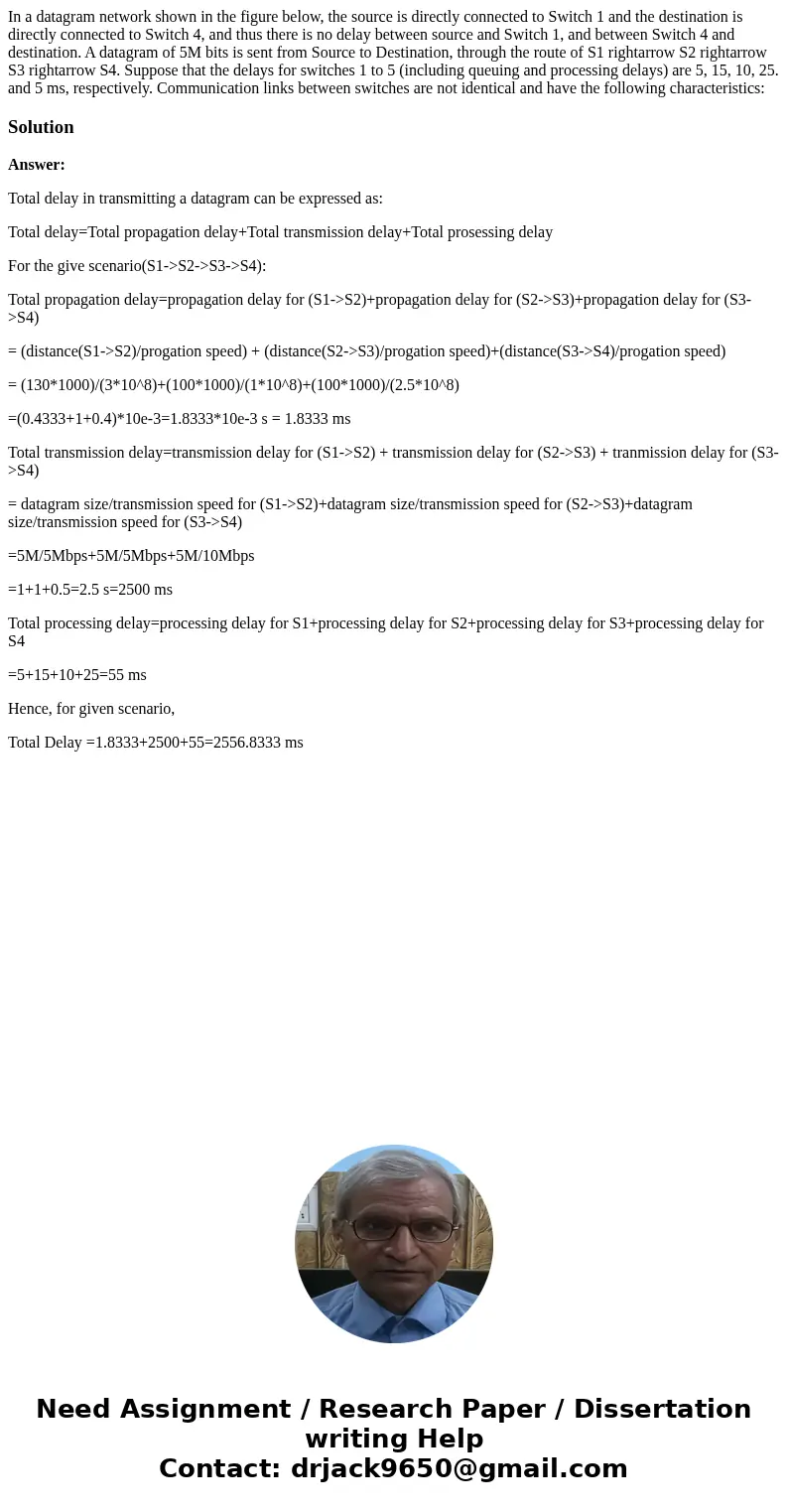In a datagram network shown in the figure below the source i
Solution
Answer:
Total delay in transmitting a datagram can be expressed as:
Total delay=Total propagation delay+Total transmission delay+Total prosessing delay
For the give scenario(S1->S2->S3->S4):
Total propagation delay=propagation delay for (S1->S2)+propagation delay for (S2->S3)+propagation delay for (S3->S4)
= (distance(S1->S2)/progation speed) + (distance(S2->S3)/progation speed)+(distance(S3->S4)/progation speed)
= (130*1000)/(3*10^8)+(100*1000)/(1*10^8)+(100*1000)/(2.5*10^8)
=(0.4333+1+0.4)*10e-3=1.8333*10e-3 s = 1.8333 ms
Total transmission delay=transmission delay for (S1->S2) + transmission delay for (S2->S3) + tranmission delay for (S3->S4)
= datagram size/transmission speed for (S1->S2)+datagram size/transmission speed for (S2->S3)+datagram size/transmission speed for (S3->S4)
=5M/5Mbps+5M/5Mbps+5M/10Mbps
=1+1+0.5=2.5 s=2500 ms
Total processing delay=processing delay for S1+processing delay for S2+processing delay for S3+processing delay for S4
=5+15+10+25=55 ms
Hence, for given scenario,
Total Delay =1.8333+2500+55=2556.8333 ms

 Homework Sourse
Homework Sourse